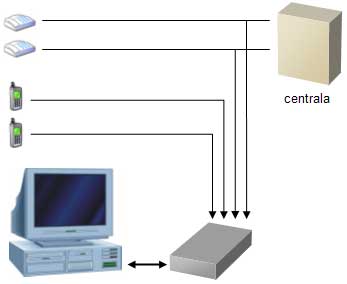System RC3
![]()
Reference
System RC3 is a digital voice recorder used to register telephone conversations or radio-station conversations. Conversations are recorded using a computer that is linked to the telephone or a radio-station via an interface.
System features

- Simultaneous conversation recording of 4 - 32 channel (telephone or radio link) on one computer,
- Recording date, time of the conversation start, finish and duration,
- Recording conversations in GSM (13kbit/s) or ADPCM (32kbit/s) format,
- Storing recorded conversations from 120 to 600 days (dependant on the amount of conversations to be recorded and computer configuration),
- Archiving of recorded conversations to a floppy disk, ZIP disk, CD-R/RW or memory card,
- Search of records according to date and time of recording,
- Detection of SELECT 5 calls from the radio station,
- Detection of called number for pulse or tone dialling,
- Collecting data regarding telephone call from a home telephone exchange via serial communication,
- Networking computers into a LAN network, where each of the computers can be used to search, reproduce and archive recordings from the other computers. This enables configuring a system to record N x 32 channels (64, 128 etc.).
- Monitoring of recording, reproducing and archiving of the records from a remote computer via a network or a telephone modem,
- Searching of recorded material (with the ability to reproduce the recording) based on recorded channel, time interval, called number , call type (incoming/outgoing),
- Changes to the configuration or erasing records from the archive is only allowed with a password. Every system access is recorded in the report including date and time of access and name of user who’s password was used.
Automatic telephone service
System RC3 can be expanded to have an automatic telephone service for the chosen number of telephone lines.
Features of the automatic telephone service are:
- Providing service information (scheduled power cuts, agreements etc) prepared by the operator,
- System integration with databases of any type, in order to provide information based on the database (checking debts, payments, etc.),
- Leaving messages to the operator – reporting faults and complaints,
- Forwarding calls to the operator,
- Other functions based on customer needs.